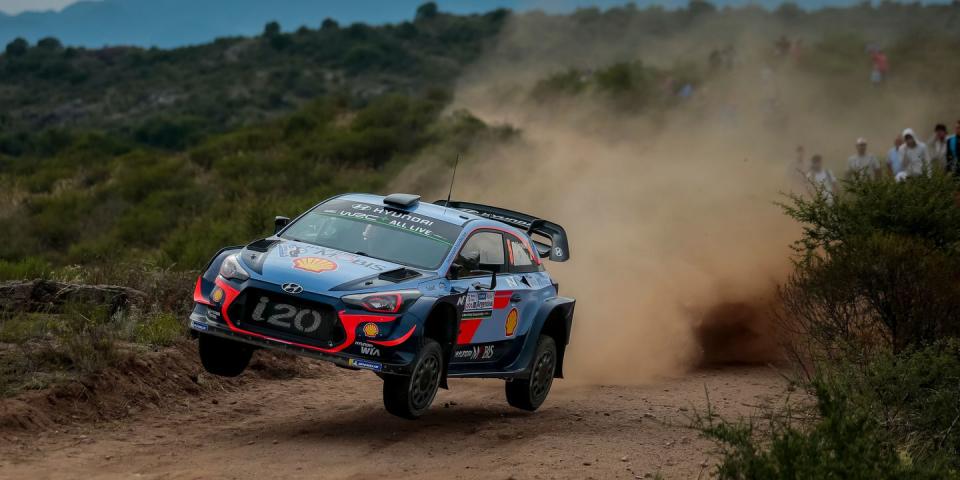Why You Should Seam-Weld Your Rally or Race Car

Rally cars get put through a ton of abuse. Just look at Thierry Neuville's Hyundai i20 above, about to land at a very awkward angle during a shakedown run ahead of the WRC Argentina 2018 this week. If you tried that in your factory-stock street car, you'd likely end up with some major body damage.
But if you're building a pavement or dirt race car from a factory shell, there's one trick you can do to improve your car's rigidity, robustness, and even crash safety. All it takes is a little welding. Okay, a lot of welding, done very precisely and with an eye toward accuracy.
We're talking, of course, about seam welding. This process adds big, strong welds along the seams between body panels on a unibody car, reinforcing the factory spot welds by adding dozens, sometimes hundreds of feet of new welds to a factory frame.
As Wyatt and Pascale from Team O'Neil Rally School explain, seam welding isn't just a matter of stripping a car to the bare shell and slapping welds on every seam you can reach. There's a process to it, and if it's done incorrectly, you could end up badly twisting or contorting your car's shell-causing the kind of damage that seam-welding is meant to prevent.
And yes, this is a seriously involved process. But if you're planning the kind of build that has you stripping a car to its bare shell, you should probably be aware of the benefits of seam welding. After all, you want your race or rally car to be strong and sturdy, for both performance and safety reasons.
You Might Also Like

 Yahoo Autos
Yahoo Autos 